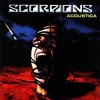

(End quote) Further, Section 5.3.6c, page 5.18 of reference (b) states: (quote) the (battery cover) sample from SCORPION had been violently, but locally, torn, particularly at the location of the bus connection bolts and nuts. Had the pressure been applied on the outside of the covers, the cover support flange on the terminal posts would have held pieces of the covers and it is expected that the cover seal nuts would have remained in place in at least some instances. This indicates that an explosion took place on the inside of the cells. Review of Figure 5-13 indicates that the threads on the terminal posts were sheared off and there are no cover seal nuts remaining. In consonance with this conclusion, Section 5.3.6, page 5.17 of reference (b) also states: (quote) the Portsmouth Naval Shipyard Analysis Group reports that the available evidence indicates the battery probably exploded at some time before flooding of the battery well occurred. The presence of melting eliminates the possibility that such damage occurred as a result of pressure-hull collapse (implosion) because analysis of acoustic data discussed by Section IV of reference (c), confirms SCORPION was fully-flooded within 0.112-seconds of pressure-hull and bulkhead collapse hence, the melting damage (and the battery explosion) had to have occurred within the still-intact SCORPION pressure-hull. (end quote) Comment: Table 5-2 notes damage from heat and melting.
-20140325131231.jpg)
Table 5-2, page 5.38 provides a list of the battery debris identified by the Portsmouth Naval Shipyard analysis team. Battery cell debris is in evidence over the entire debris field. (end quote) Section 5.3.6, page 5.17 of reference (b) states: (quote) The battery installed in SCORPION was a TLX-53-A, manufactured by Gould-National Battery, Inc. While it is possible that this damage could have been an after-effect of hull implosion, the SAG (Structural Analysis Group) feels that the intrusion of particles into the plastisol cover would have been much less severe had water been in the battery well at the time. The damage to the terminal battery post coupled with the violent tearing of the plastisol covers indicates the possibility of a battery explosion. The high velocity intrusion of pieces of the flash arrestor into both inside and outside surfaces of the retrieved plastisol cover attest to violence in the battery well. ĭISCUSSIONS: EXAMINATION AND METALLURGICAL ANALYSIS OF A RECOVERED SCORPION BATTERY COMPONENT Section 7.1.3, page 7.2 of reference (b) states: (quote) ….the general battery damage is violent. Collectively, these findings indicate battery explosions were the initiating events responsible for the loss of SCORPION on. This assessment is based on (1), the results of examination and microscopic, spectrographic and X-ray diffraction analyses of recovered SCORPION battery material that confirm an explosion occurred, and (2), the July 2008 reanalysis of the SCORPION precursor acoustic signals that identified these signals as explosions contained within the SCORPION pressure-hull. This assessment is NOT the generic attribution of the loss of a submarine to a battery-explosion advanced as a default explanation in the absence of any more likely construct. Noted times are actual event times on board SCORPION. As discussed by reference (a), the SCORPION pressure-hull collapsed at 18:42:34Z at a depth of 1530-feet. These events, which did not breach the pressure-hull, prevented the crew from maintaining depth-control. The USS SCORPION was lost because hydrogen produced by the 65-ton, 126-cell TLX-53-A main storage battery exploded in two-stages one-half second apart at 18:20:44Z on.

(c) Originator s ltr of Įncl: (1) Enclosure (1) to Originator s ltr of 14 March 2009 Ref: (a) Originator s ltr of (b) SCORPION SAG Report: “EVALUATION OF DATA AND ARTIFACTS RELATED TO THE USS SCORPION (SSN-589) (U)” of 29 June 1970, prepared for presentation to the CNO SCORPION Technical Advisory Group by the Structural Analysis Group: Peter Palermo, CAPT Harry Jackson, Robert Price, et al. Mr.īruce Rule is an acknowledged acoustics expert. The following is analysis of what caused the loss of the USS SCORPION by Mr. 50 Years today the USS SCORPION was lost with 99 crewmen dying in the incident.


 0 kommentar(er)
0 kommentar(er)
